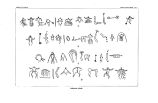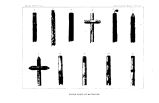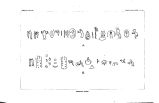| OCR Text |
Show POWELL.] PALAIHNIHAN FAMILY. 97 missionary who affirmed the affinity of the Taensa language to that of the Na'htchi, before he had visited the latter in 1699, and of Father Gravier, who also visited them. For the present, therefore, the Taensa language is considered to be a branch of the Na'htchi. The Taensa formerly dwelt upon the Mississippi, above and close to the Na'htchi. Early in the history of the French settlements a portion of the Taensa, pressed upon by the Chicasa, fled and were settled by the French upon Mobile Bay. PRINCIPAL TRIBES. Na'htchi. Taensa. Population.- There still are four Na'htchi among the Creek in Indian Territory and a number in the Cheroki Hills near the Missouri border. PALAIHNIHAN FAMILY. = Palaihnih, Hale in U. S. Expl. Expd., vi, 218, 569, 1846 ( used in family sense). = Palaik, Hale in U. S. Expl. Expd., vi, 199, 218, 569,1846 ( southeast of Lutuamiin Oregon), Gallatin in Trans. Am. Eth. Soc., n, pt. 1, 18,77.1848. Latham, Nat. Hist. Man., 325, 1850 ( southeast of Lutuami). Berghaus ( 1851), Physik. Atlas, map 17, 1852. Latham in Proc. Philolog. So^. Lond., vi, 82, 1854 ( cites Hale's vocab). Latham in Trans. Philolog. Soc. Lond., 74, 1856 ( has Shoehoni affinities). Latham, Opuscula, 810, 341,1860. Latham, El. Comp. Phil., 407, 1862. = Palainih, Gallatin in Trans. Am. Eth. Soc., n, pt. r, c, 1848. ( after Hale). Berghaus ( 1851), Physik. Atlas, map 17, 1852. = Pulairih, Gallatin in Schoolcraft, Ind. Tribes, in, 402,1853( obvious typographical error; quotes Hale's Palaiks). = Pit River, Powers in Overland Monthly, 412, May, 1874 ( three principal tribes: Achomawes, Hamefcuttelies, Astakaywas or Astakywich). Gatschet in Mag. Am. Hist., 164, 1877 ( gives habitat; quotes Hale for tribes). Gatschet in Beach, Ind. Misc., 489, 1877. = Acho- ma'- wi, Powell in Cont. N. A. Eth., Ill, 601, 1877, vocabs. of A- cho- ma'- wi and Lutuami). Powers in ibid., 267 ( general account of tribes; A- cho- ma'- wi, Hu- ma'- whi, Es- ta- ke'- wach, Han- te'- wa, Chu- ma'- wa, A- tu- a'- mih, Il- ma'- wi). < Klamath, Keane, App. Stanford's Comp. ( Cent, and So. Am.), 460, 475, 1878 ( includes Palaiks). < Shasta, Bancroft, Nat. Races, in, 565, 1882 ( contains Palaik of present family). Derivation: From the Klamath word p'laikni, signifying " mountaineers" or " uplanders" ( Gatschet). In two places1 Hale uses the terms Palaihnih and Palaiks interchangeably, but inasmuch as on page 569, in his formal table of linguistic families and languages, he calls the family Palaihnih, this is given preference over the shorter form of the name. Though here classed as a distinct family, the status of the Pit River dialects can not be considered to be finally settled. Powers speaks of the language as " hopelessly consonantal, harsh, and sesquipedalian," * * * " utterly unlike the sweet and simple lan- 1U. S. Expl. Expd., 1846, vol. 6, pp. 199, 218. 7 ETH 7 |














































































































































































































































































































































































































